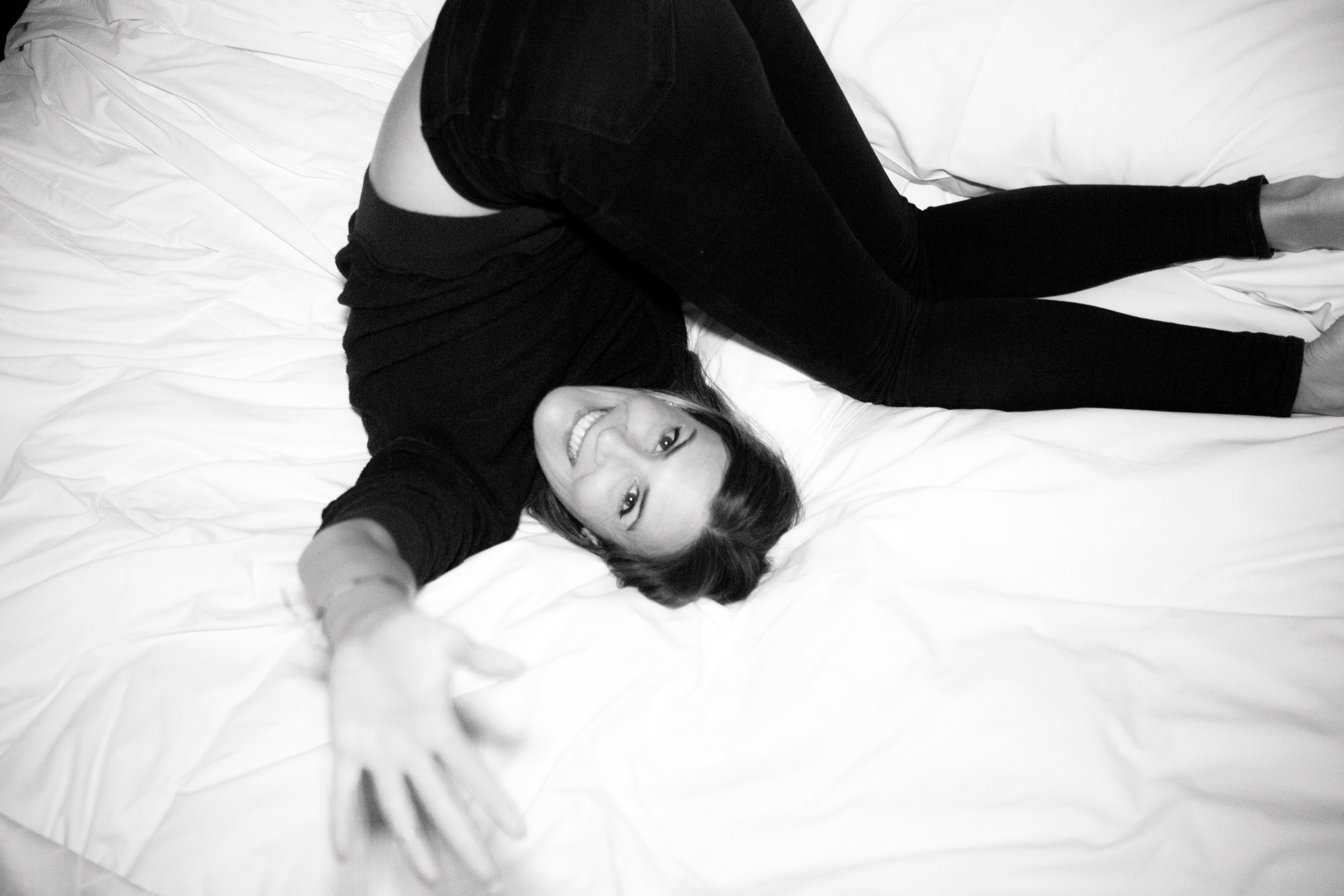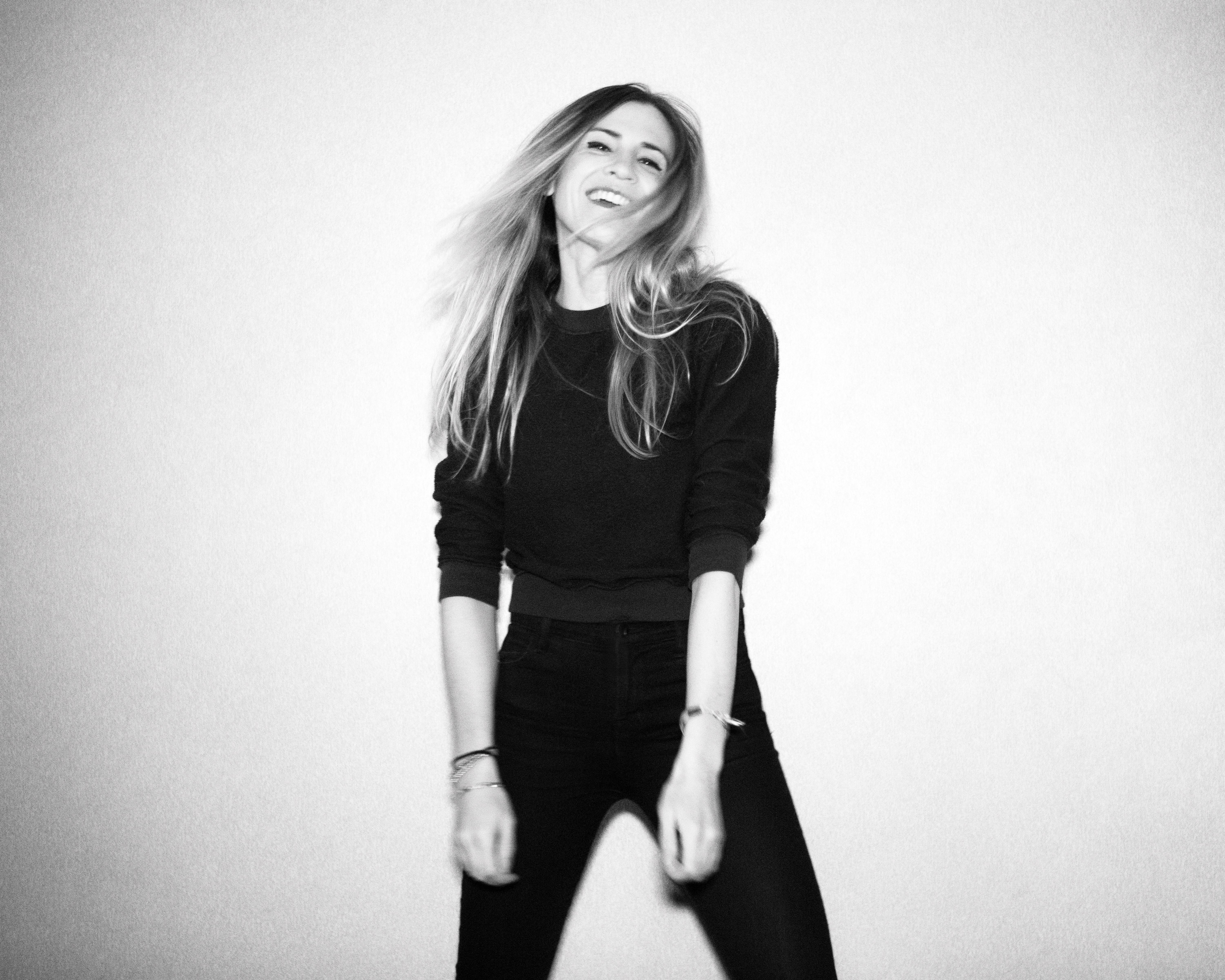
- Interview by Tina Essmaker January 12, 2016
- Photo by Jen Dessinger
Meredith Jenks
- photographer
Meredith Jenks is a New York-based commercial photographer whose photos range from quiet fashion portraits to energy-filled action shots. Her clients include Converse, Nike, The New Yorker, and Bloomberg Business Week, among others. When she is not shooting for work, she is probably taking iPhone photos of her dog, Mouse.
Tell me about your path to becoming a photographer. My dad is an oil landscape painter, so I was exposed to art while growing up. My dad took us to museums often and I did my first oil painting when I was seven years old.
Growing up, I wanted to be a fashion designer. My grandparents both thought that was cute, so when I was 10, they got me a subscription to Vogue. So, from a young age, I was exposed to fashion and fashion photographers. I noticed Helmut Newton’s photos early on. Those were the ones that really stuck out to me in the magazine. That’s when I realized that there were people who made that imagery.
Where did you grow up? We moved around. We lived in England for a year before we moved to Sedona, Arizona, for seven years, and then ended up in Northern California. I went to middle school in Mendocino and then went to Cate School, a boarding school near Santa Barbara, which was an interesting little twist.
While at boarding school, I took a photo class on a whim. For most people, it was a slacker class, but I was into it. When the class started, I thought, “Well, maybe I won’t actually become a fashion designer. Maybe I’ll become involved by shooting it.” I still really loved fashion, and thought it was magical to be able to create those scenarios on the pages.
In my sophomore year of high school, my photo teacher sent a photo I took to an international contest. I don’t know how big the contest actually was, but I won. I got a brick of 35mm black and white film and a gift certificate to B&H. This was the first time that I had ever won anything, and it felt good. I became known around school as the photographer girl. It became part of my persona.
I decided that I wanted to be a photographer when I was 16. It was an easy decision because my dad was an artist. I knew there were artists out there who created for a living, so I didn’t feel pressure to do something else.
Did you go to college after high school? I applied to three colleges: UCLA, Cal Poly San Luis Obispo, and Art Center College of Design in Pasadena. I chose Art Center because I had already gone to boarding school and wasn’t interested in college dorm life. Art Center is like a trade school, where you don’t live on campus. It’s really intense. You only learn about your major. Since I was so young, it helped me push myself and figure out what I wanted to do. That’s the gist of why I’m doing photography. I don’t think all people need to go to art school to become a photographer, but I’m glad I did.
At Art Center, I shot 35mm on-camera flash back in the day before digital was around. A teacher told me I wouldn’t get work because it was unprofessional and that magazines and ad agencies don’t like the look because it appears amateurish. He was trying to be helpful, but that led me into six years of portrait lighting setups, which I was never successful at. It was frustrating. I did everything how I was supposed to and it didn’t work.
All along, I was still taking snapshots of friends. Two friends in particular—one who now has a design firm in LA called National Forest, and another who I was at college with—told me, “These photos are so much cooler than what you’re doing for your clients. I don’t understand why you don’t do that for work.” Meanwhile, Terry Richardson had gained attention for working with a point-and-shoot. People were out there doing it. That’s when I questioned what my college teacher had said and the work I had been making.
When I moved to New York almost five years ago, I decided to do what felt right. I shot a lot with flash on camera. That’s when I started getting more work—and it was work that I was excited about doing. The lesson I learned is that if I want to do something, I should do it and not fall into the trap of wondering what other people think.
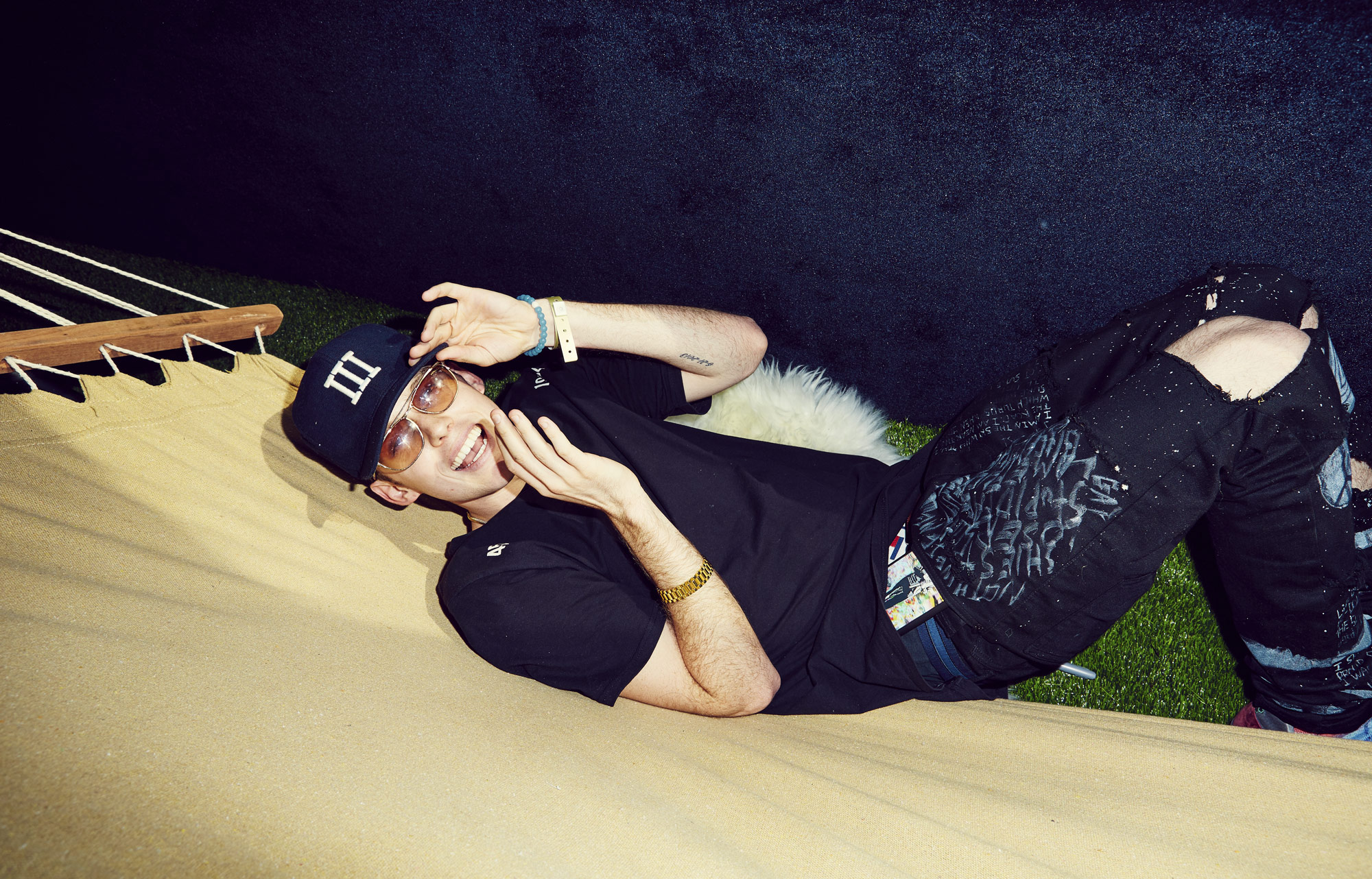
That’s interesting. So, you started your own business as a freelance photographer right after graduation from Art Center. Were you also working other jobs on the side? And when were you able to finally sustain yourself as a full-time photographer, which is what you do now? I definitely had other jobs when I started. I did extra work for movies and TV. I assisted a wedding photographer and acted as her personal assistant and babysitter. (laughing) I also assisted my photographer friends on jobs.
The good thing about Art Center, though, is they prepare you to become a commercial photographer. They teach you that you have to have a portfolio and a website, you have to do promos, you have to go to New York for meetings. They tell you exactly how to become a professional and they bring professional photographers in to speak to students. We had real-life experiences and knowledge shared with us. So I started with a good base, and I knew it would take at least five years to get started. I have other friends who thought they’d go out and be successful right away, but I didn’t ever think that. I knew it was going to be a slow process.
Eventually, I assisted the photographer, Jeff Lipsky, who did a shoot for Premiere—which no longer exists—and on that shoot I met Catriona Ni Aolain, the photo editor for the magazine. The next year when I went to New York, I emailed her to say I was in town. She was really nice and told me to come in. She started to give me these small $500 all-inclusive jobs, which I was overjoyed to take, and then she went to ESPN Magazine and hired me there. Someone from ESPN went to People, so I got work there. After about five years, I got more and more work and continued to do meetings in New York, which I started straight out of college, even though my portfolio wasn’t ready. People notice improvement, though. They see that you keep coming back. The first time, nobody met with me. The next time I had two meetings.
“…when I was 10, [my grandparents] got me a subscription to Vogue. So, from a young age, I was exposed to fashion and fashion photographers. I noticed Helmut Newton’s photos early on…That’s when I realized that there were people who made that imagery.”
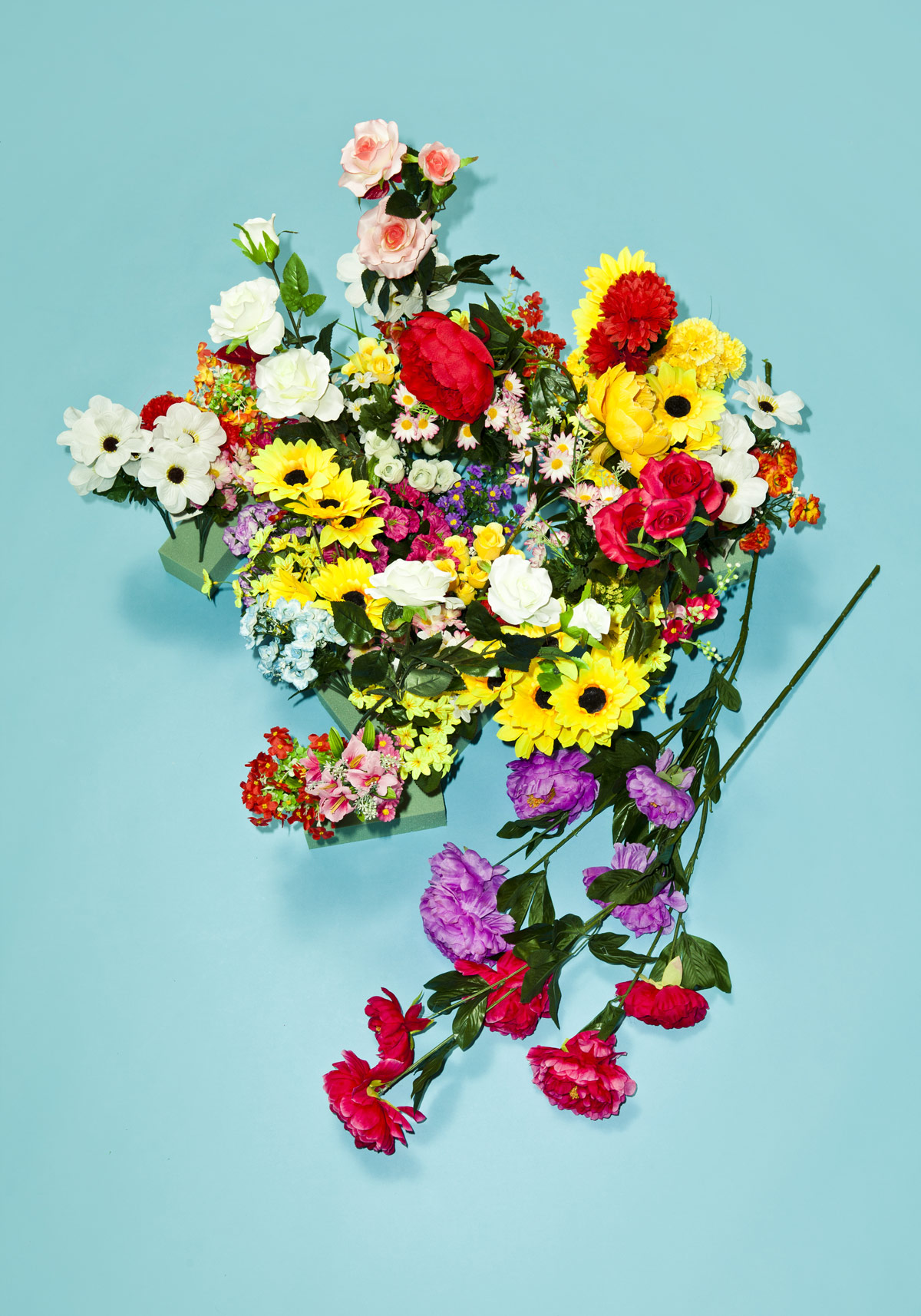
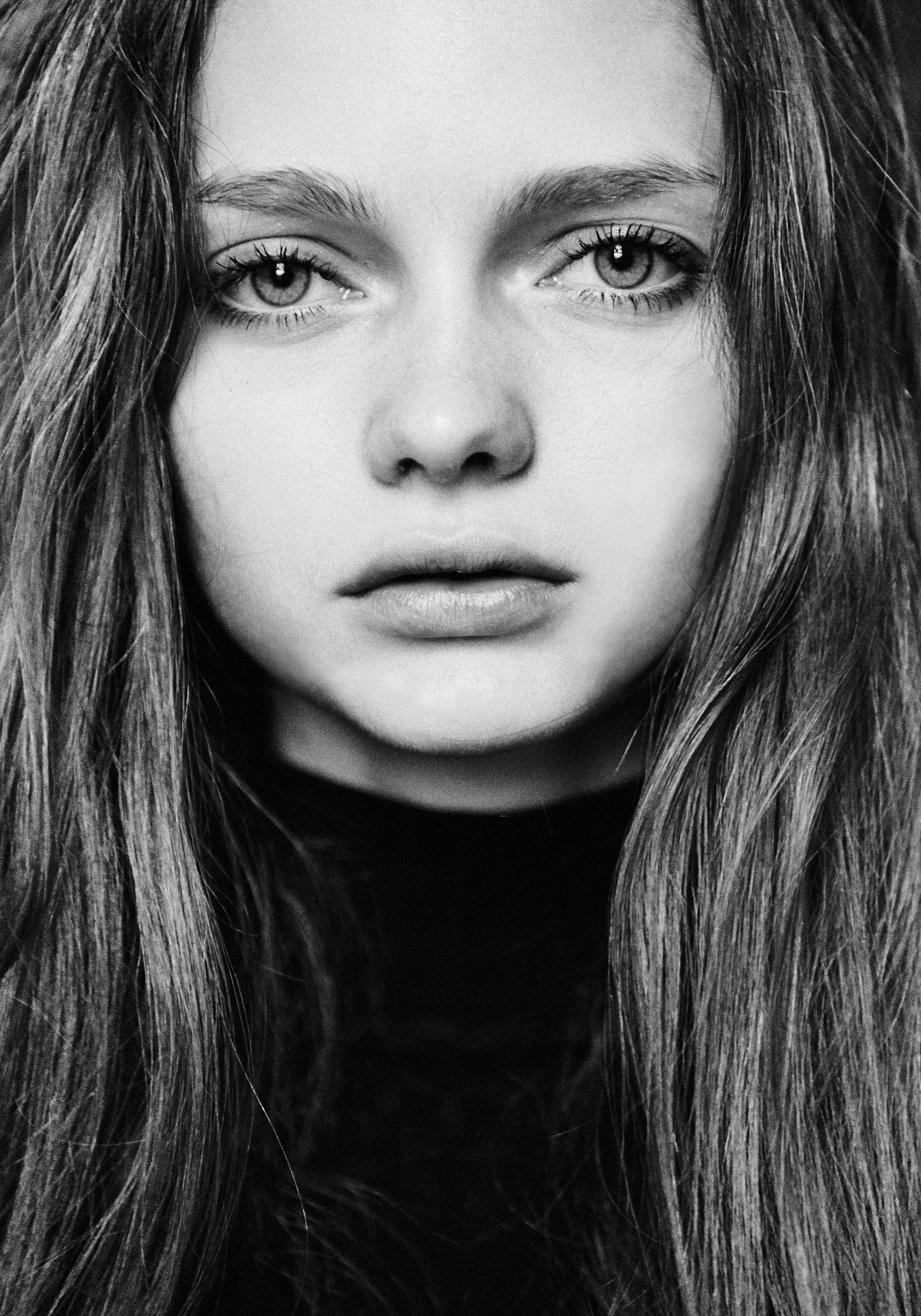
Early on, it’s easy to get rejected and become discouraged. Of course your work isn’t where you want it to be because it takes time. I like that you were persistent. Yeah, that’s my personality. It’s an ego thing, too, in that I didn’t have a big ego about it. I was fine being someone’s personal assistant or doing extra work on the side. Some people aren’t okay with that. They want to shoot covers or do nothing. That’s not realistic. I knew it was a process and my dad was a good example of that. He’s been doing art his whole life, and while he hasn’t been crazy-successful, he loves doing it. For me to give up because I wasn’t getting the jobs I wanted would have been stupid. You have to keep trying.
How many years did you stay in LA before moving to New York? I started at Art Center in 1999 and graduated in 2002. I started working a good amount by 2007 and thought, “I’m doing it!” Then 2008 hit, and the economy took a dive. I didn’t get a job for five months. It was a dark time for me; I was taking a lot of crying selfies. I had to get a restaurant job and then a retail job. I thought it was over. I even applied for art buyer positions and other photography-related staff jobs. I somehow got through that and eventually decided I had to move to New York in 2011.
I was about to turn 30 and it seemed like now or never. I was just out of a relationship and there was nothing to keep me in LA. My friend, Anna Wolf, already lived in New York and told me I could stay with her as long as I wanted. I moved out and lived with Anna for two months. The first year and a half was brutal. I was poor, living in a slummy building, and worked whatever jobs I could. I also had $30,000 in credit card debt. I was in a rut.
This is the good stuff. I think many of our readers can relate to what you’re saying. They’ve either been in this place, are in this place now, or might be in the future. When you’re a freelancer, work ebbs and flows. Yeah, to be a freelance artist, you have to really want it and keep going for it. It doesn’t come easy.
And you’re not riding the wave all of the time. It can be a roller coaster. Right now I’m definitely financially stable and I’ve paid off most of my credit cards and I just bought an apartment. I did well enough over the past two years that I accomplished all of those things. In the back of my mind, I still think, “Any minute the phone could stop ringing.” It’s scary. Because of past struggles, I work harder and don’t rest on my laurels.
Moving to New York has been good for me. I’m a social person and I’ve met so many people here. It’s been helpful to talk to people in person—I’m no longer an anonymous person who lives across the country. I also got a great agent when I moved here. On top of that, I have been shooting for ten years now, so I am more confident and don’t freak out about jobs.
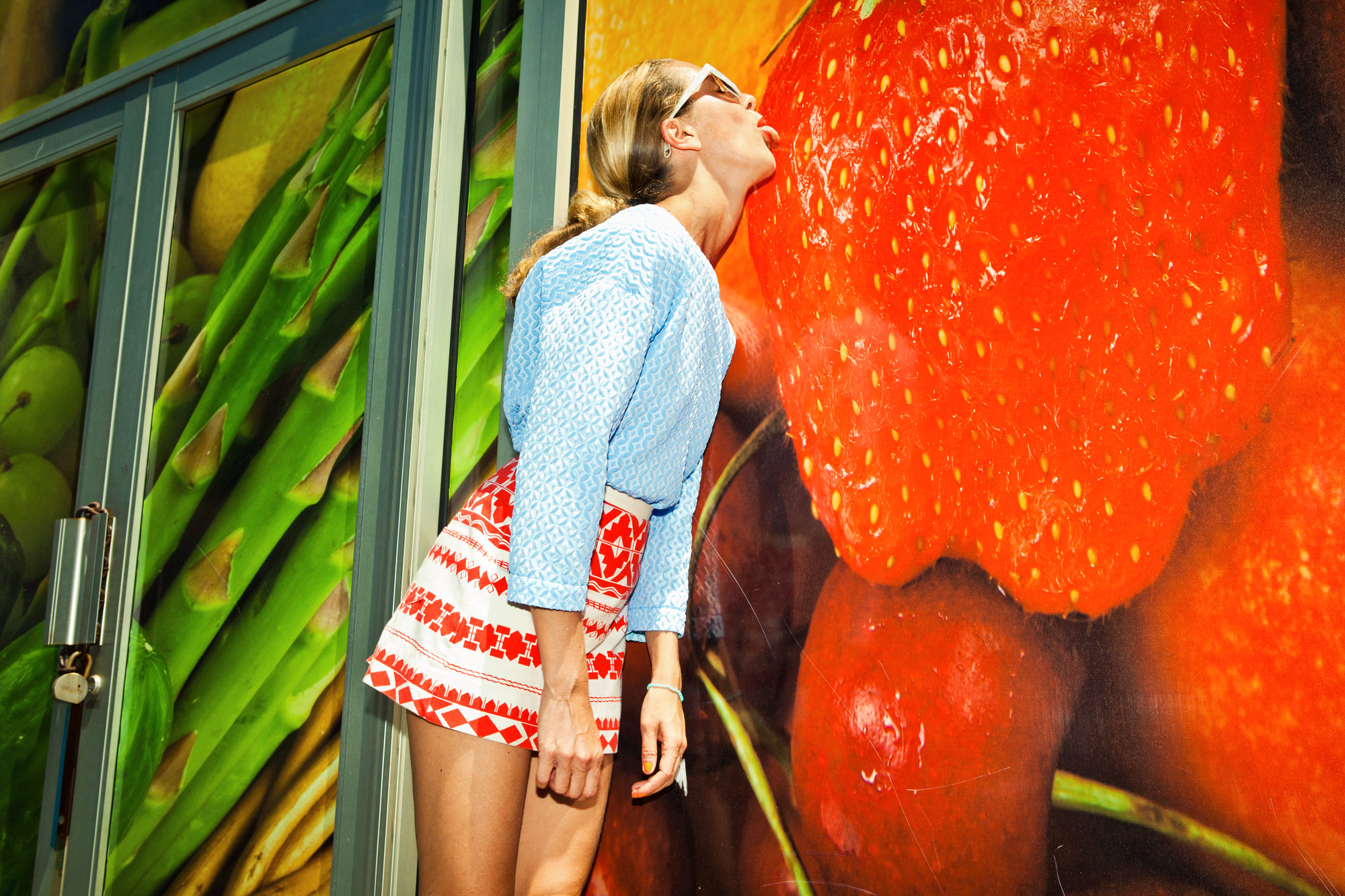
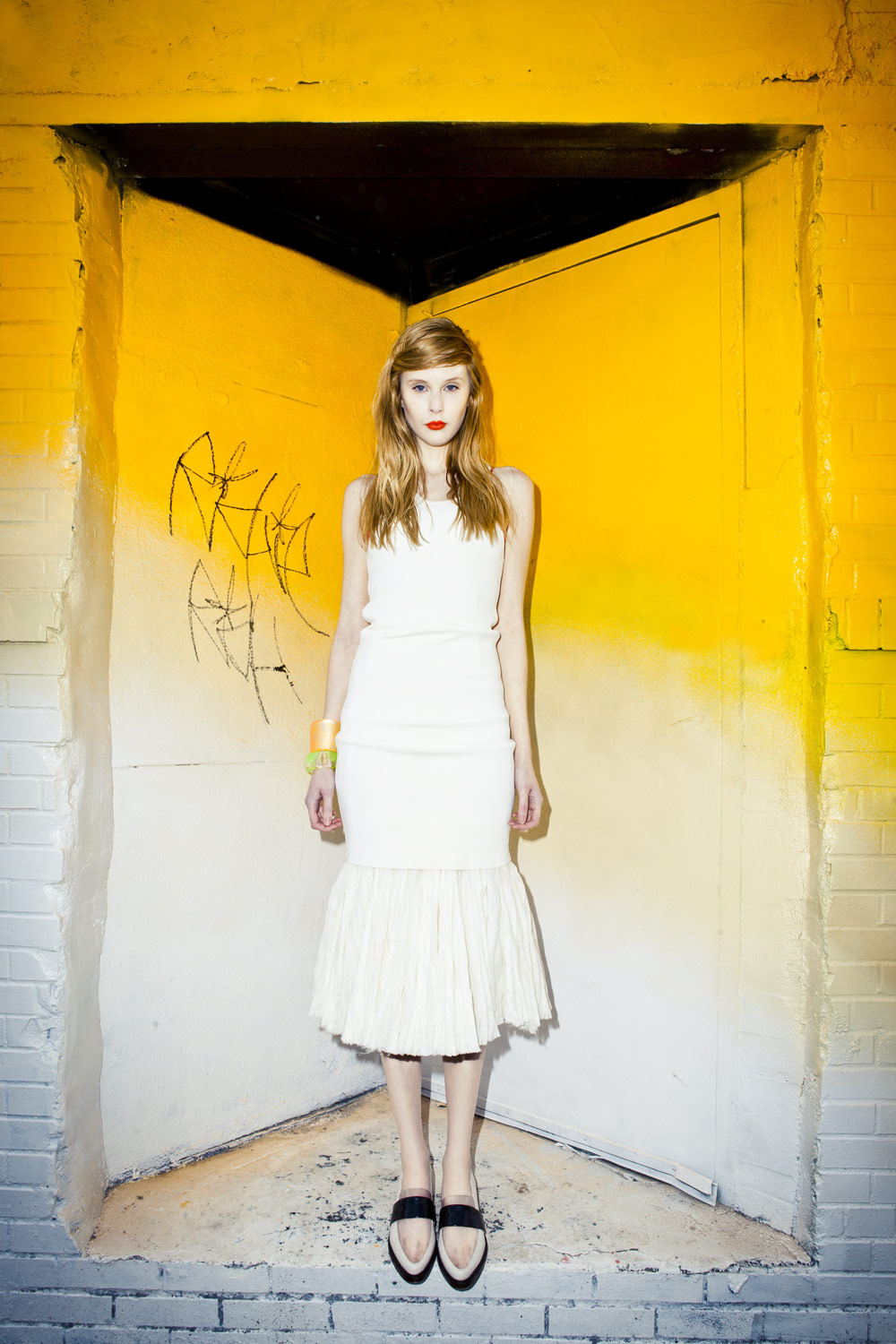
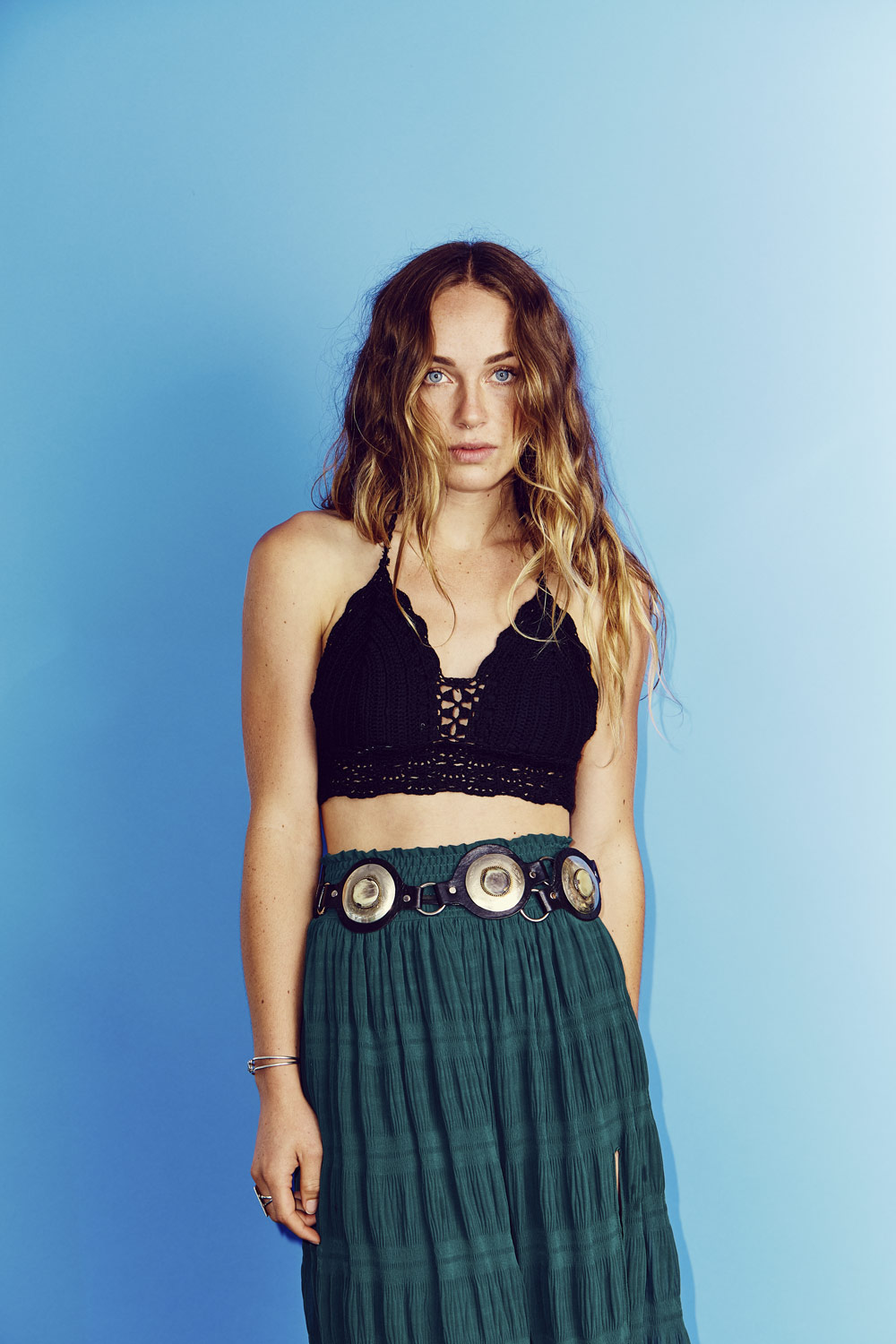
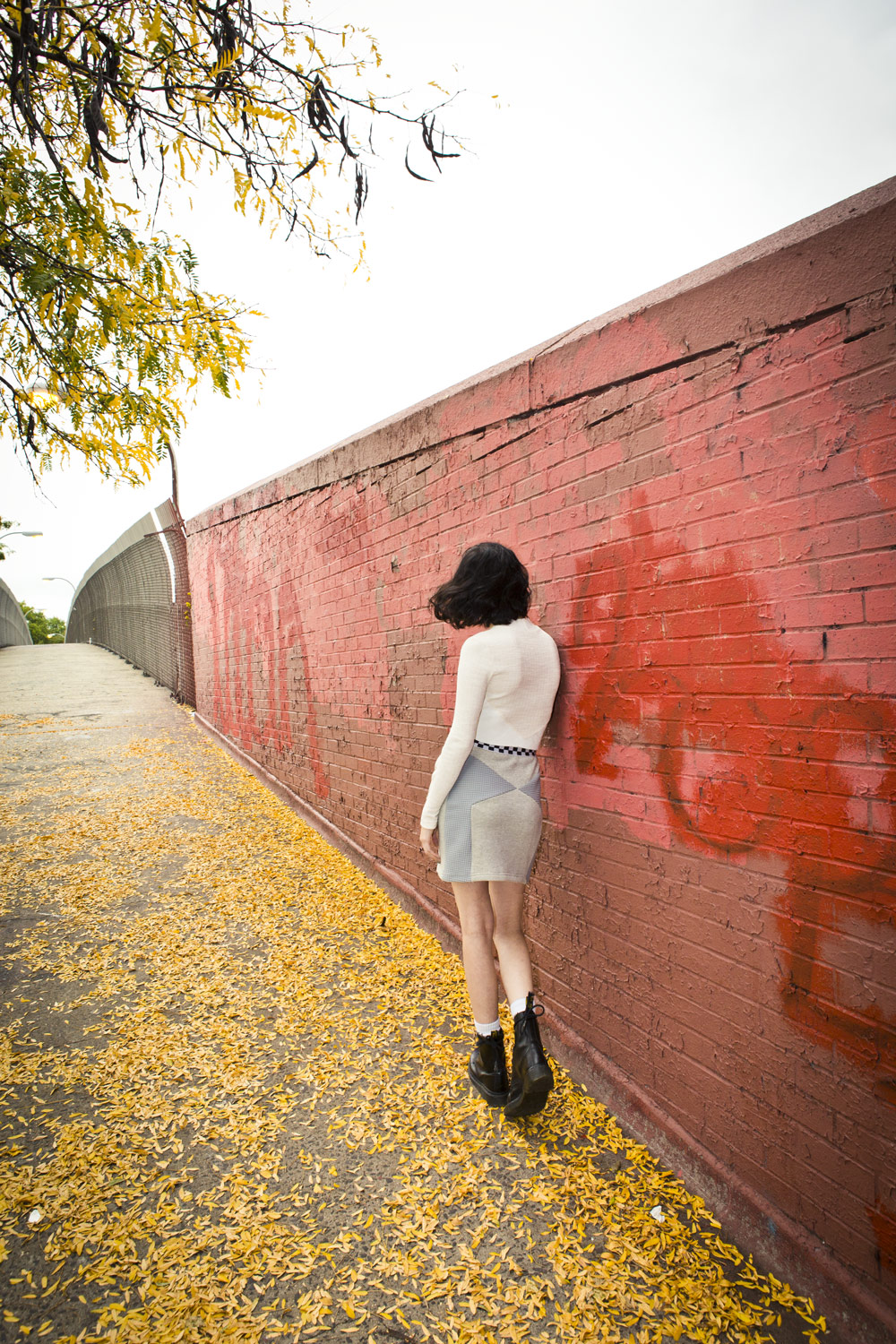
What kind of work are you doing right now? I do everything. I’ve been shooting food for The New Yorker. I’ve shot accessories and done reportage. Celebrities are fun, but there’s also ego involved, so you can’t always do what you want. I love shooting fashion because it’s a little more creative. You have more control over the situation, which I like. I do think that shooting a beautiful portrait of someone I think is cool for W or Vanity Fair would be amazing.
Do you have any interesting celebrity stories? The first person who ever bummed me out was Scott Baio. I was so excited because I grew up watching Charles in Charge. I showed up to the shoot thinking it was going to be amazing and he was a jerk. In his defense, he wasn’t filled in on the artistic direction and I don’t think he was into the idea for the shoot, but I was still super disappointed.
Generally, I find that celebrities want to be treated like normal people, so that’s how I approach them. I’ll tell stories or ask them questions like I would with anyone else. I’ve gotten great photos because of that. I still have moments where I find myself wishing I had asked for more because I realized later that they would’ve done it. With celebrities, the idea of the celebrity can be more intimidating than the actual person.
What advice can you offer to a photographer who is starting out? Shoot as much as you can. Even when I wasn’t working, I shot with a little Canon PowerShot G10 camera everywhere I went. That’s important because people notice if you’re adding new work to your website.
E-mail people. I’ve cold-called and emailed so many people since I’ve started. It’s important to get your name and work out there, even if you feel insecure about your work and don’t think it’s ready to show. Just show your work and take jobs. It’s practice.
Promos matter. Last year I started doing bigger, more expensive promos, partially because I needed a write-off and partially because I wanted to send something that felt like a zine. I had emailed the Converse art buyer for a few years. She was always nice and said my work was cool, but I never got any work. Last year, I sent her a big promo poster and she hired me because of it. Since then, I’ve shot for them three times. The New Yorker magazine hired me because of a promo I sent last year. Even if you get one job, it’s worth it because you’ve opened up the door to a relationship with someone who didn’t know about you before. The industry is small and people move around a lot. If you do a good job, they remember you and will bring you with them.
To sum it up, there are three things in photography: 1) Who you know: building those relationships, 2) Business: understanding the money side, and 3) Talent. Unfortunately, all three are pretty equal; it’s not just about taking a good picture.
“I don’t consider myself a fine art photographer; I know I’m a commercial photographer. I might make images that people want to put on their walls, but I’m not reading into my process. I just want to take interesting pictures.”
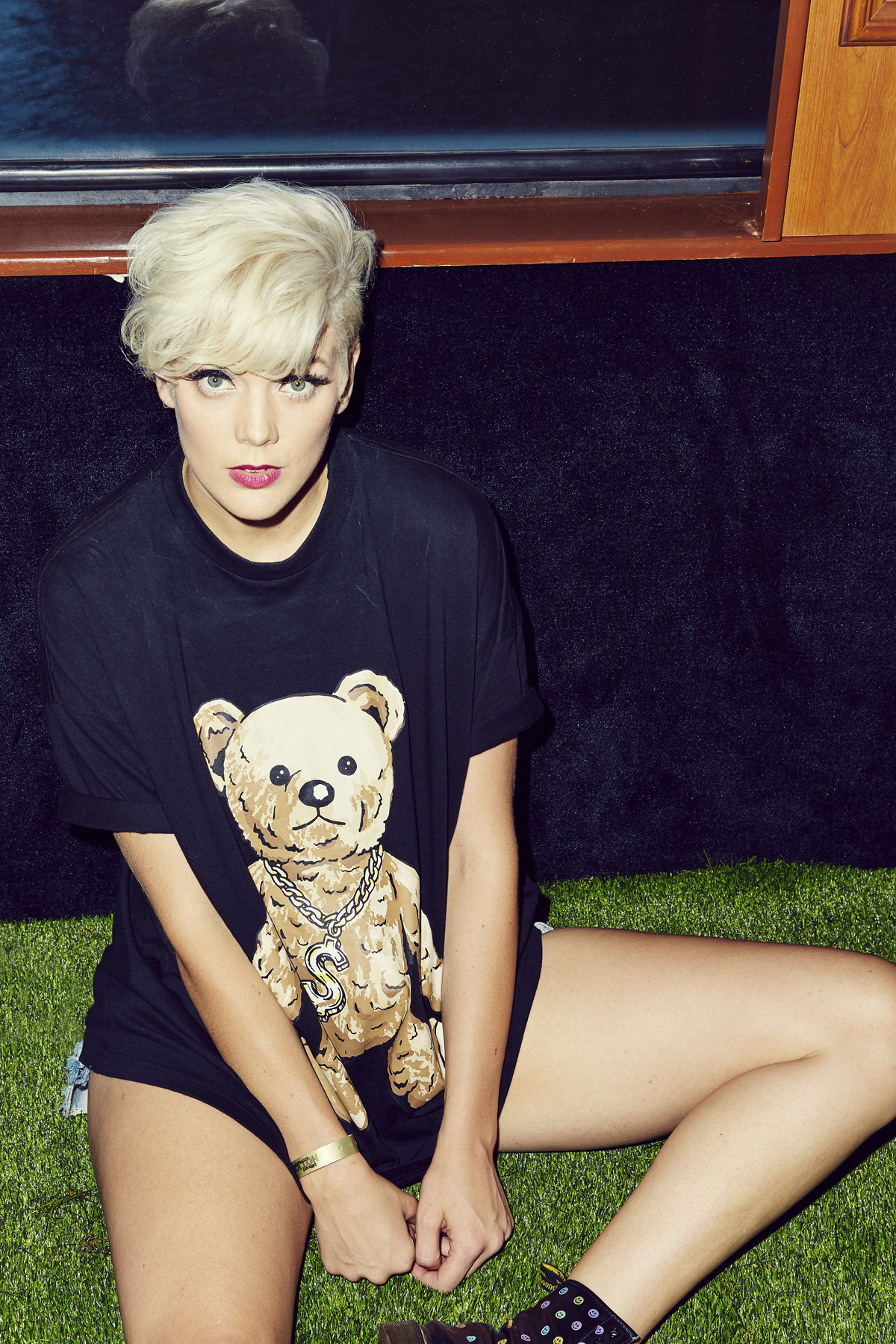
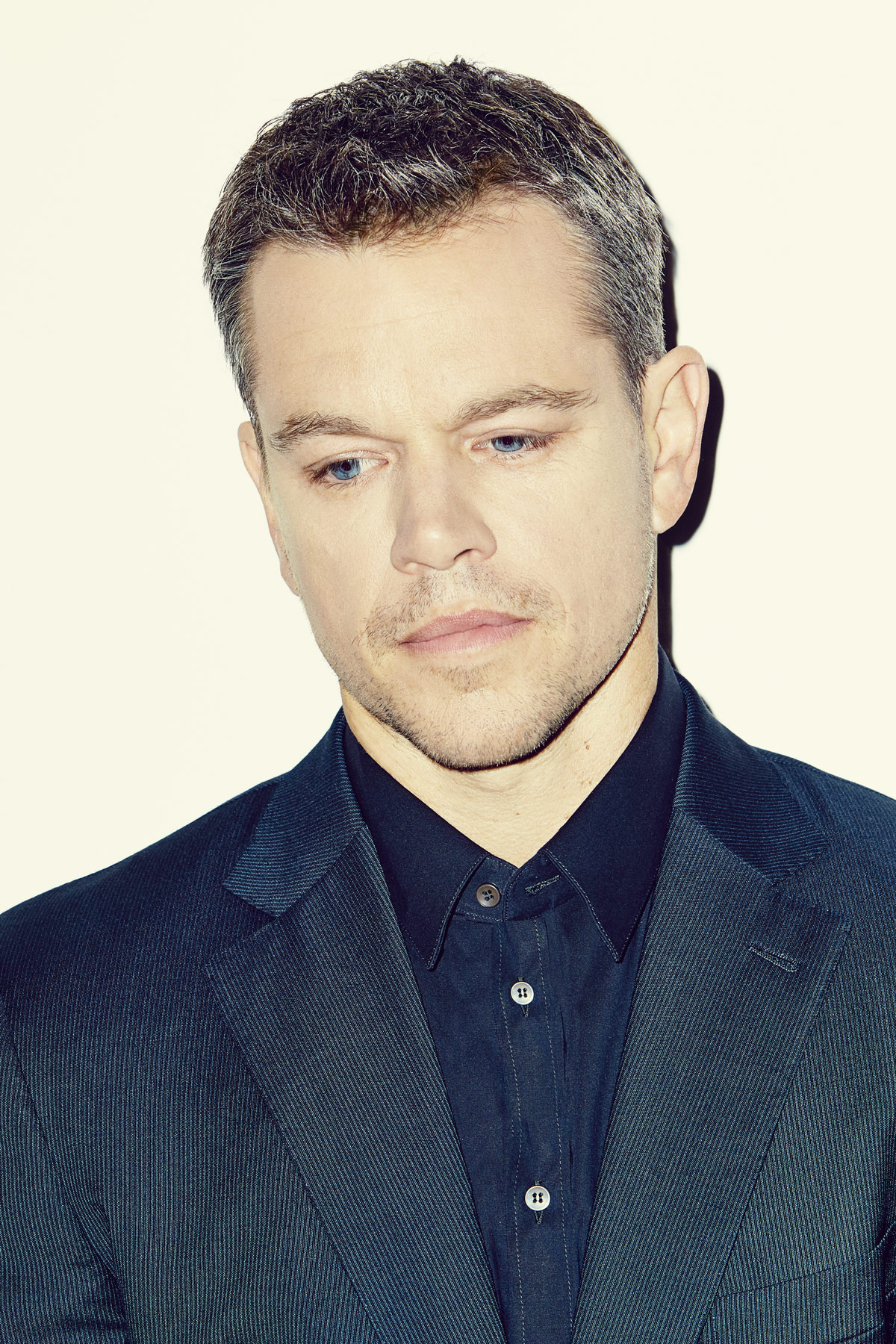
You mentioned that your dad is an artist. What does he and your family think of what you do? My dad used his inheritance from his parents to pay for my college. I had some student loans and scholarships, but most people who go to art school come out with $100,000 in student loan debt, and I left with about $30,000 in debt. That was way more manageable. My parents value education and they set me up. I’m forever indebted and will definitely take care of them. It’s not like they were super wealthy, either—my mom is a teacher and my dad is an artist.
I would have pursued photography either way, but it would have been a different course if my parents hadn’t been supportive. It’s hard to imagine not having that. I recognize that it’s a big help in life to have people who support you, push you along, and help you. I value that in my parents.
Have you stayed in touch with friends from college, too? Yes, Art Center has a strong community and I still have a lot of friends from there—Anna Wolf, Brigitte Sire, Ramona Rosales, and Jen Dessigner, who photographed me for this, to name a few. Beyond them, I hear from friends who are excited about seeing my name in print and they send me pictures of my images in Cosmo or whatever. They’ve all seen my ups and downs, like me being depressed and working in a restaurant. Now they see that I’m super happy and actually doing the work I want to do.
It’s grounding to have family and friends who know you and who’ve seen your course. It’s easy to have fans when things are going well. To have people by your side believing in you no matter what is amazing. I feel like most of my friends have taken that same path. We’ve struggled here and there. Anna found success a few years ahead of me, so when I moved to New York it was nice to have her help. Now most of us have been working for over a decade, so those of us who have stuck with it are starting to gain recognition. It’s nice to be part of a group of creative people who support each other.
Are you creatively satisfied? I think so. I don’t consider myself a fine art photographer; I know I’m a commercial photographer. I might make images that people want to put on their walls, but I’m not reading into my process. I just want to take interesting pictures.
If you had interviewed me three years ago, I don’t think I would have answered the same. Now, I feel like I’m living the dream. I have wanted to do this since I was 16, and now I’m doing it in New York, shooting for clients I always wanted to shoot for and making a living. That’s incredible to me, so yeah, I feel fulfilled.
Has your definition of success evolved over the course of your decade-long career? All I ever wanted was to live off of photography. Now that I’m doing that, I’m happy. Obviously, when you live in New York, your perspective changes. In LA, it’s easy to squeak by. Here, you can walk down the street and see into the window of someone’s million dollar townhouse and think, “I wouldn’t mind that.” I try not to focus too much on that type of financial, superficial stuff. For me, it’s more about people being receptive to my work. It’s exciting when a young person emails me to tell me they like my work. Even this—it’s cool that you know my work and want to talk to me about how I got to where I am.
There’s also something to be said about keeping low overhead. There are photographers who have big studios and staff, and I’m not sure I ever want to get into that. I currently have a cheap studio and office space in Crown Heights, which I split with a few friends. I like to keep overhead low because I don’t want to have to say yes to a job I don’t want to take in order to keep up. I’d rather have the freedom to grow over time. The beauty of freelance is that if I have a week where I shoot six days in a row, I can take the next day off and watch TV all day. (laughing) I can take a break if I want to.
Downtime is important, but it can be hard to give yourself permission to take time off. It’s especially hard in New York where everyone works all of the time and has side projects. It’s hard not to buy into that. If I were hustling as much as some of my friends, I’d probably be working even more or getting even bigger ad jobs. But I’d rather take three hours to walk across the Brooklyn Bridge with a friend who’s in town and then get drunk at 3pm with them than sit in my office and miss out on that. There’s a balance. Sometimes I have to draw the line, but taking time off is important to your well-being.
I don’t know how this works for everyone else, but in photography the minute you book a vacation, some ad job will come in. I’m generally pretty strict about vacations. It’d have to be something insane for me to pass up a trip with my friends. As a freelancer, it’s important to draw the line on when you’re going to work.
“It would be the ultimate to go back to high school and tell the students that they, too, can do this. Photo class isn’t just a slacker class. It’s something you can do for a living.”
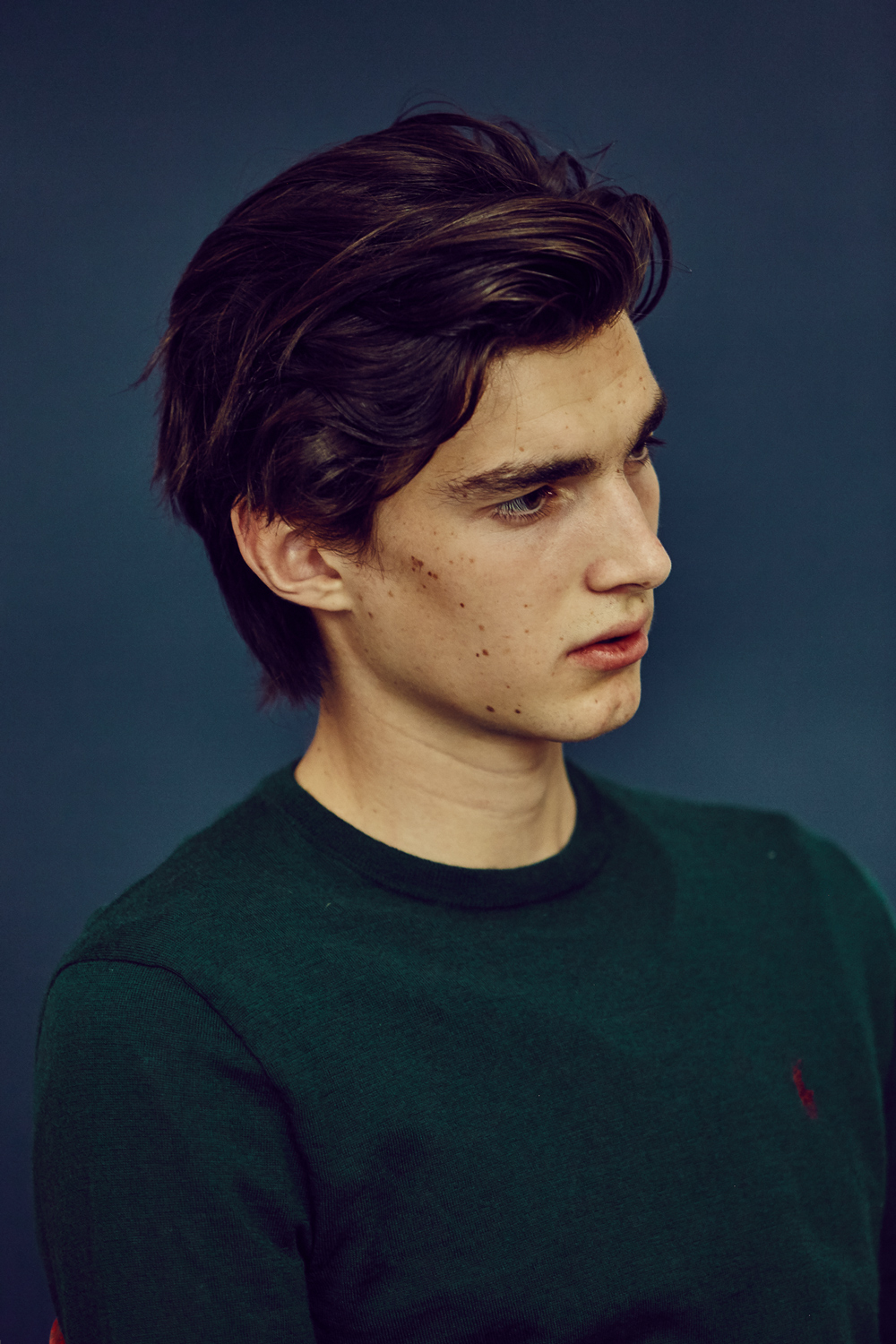
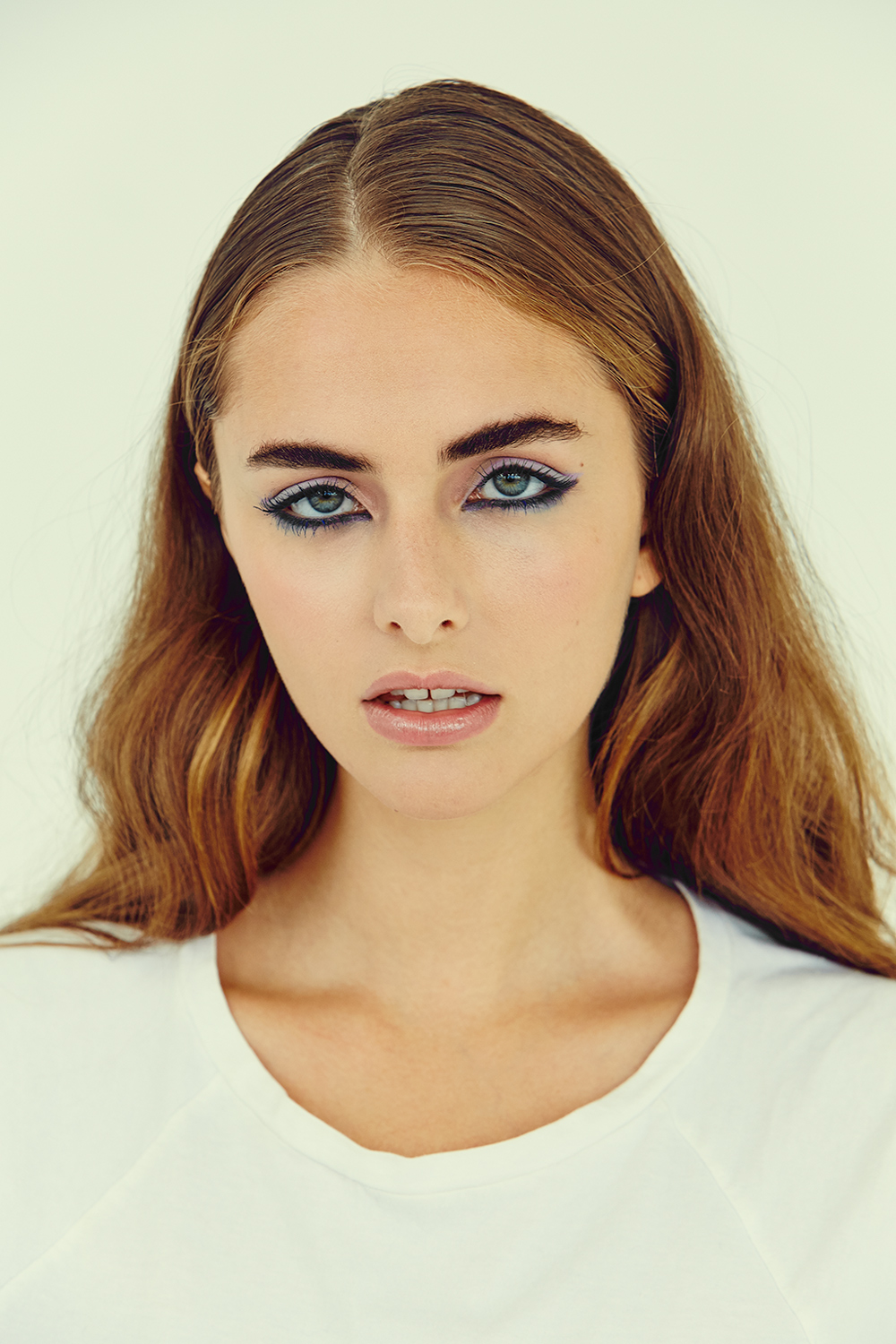
Are there any photographers you’re following right now? I don’t know who shot it, but I was in Zara during the holiday season and saw their upcoming Spring 2016 campaign. It’s gorgeous. I think they built a set outside and shot at sunset, but it looked like it was in a house with plants growing all over the place. It was beautiful. I love that it’s Zara, which is a pretty widely known brand. They’re everywhere and people are seeing those images, which are basically fine art.
I also like Charlie Engman. He’s doing some really cool things. His stuff is pretty flash on camera light, but he started out messing around with paper, punching a hole in it and having a limb come through or rolling up a couple seamless backdrops. I’m assuming he did it on his own, but it’s something that’s difficult to do. I worked on an ad job where they were obviously inspired by his setup and the prop stylist wasn’t quite able to capture it with the same precision. Respect to Charlie Engman cause he killed it. Anyone who starts a trend is interesting to me. The people who stand out are the ones who are doing something different.
I definitely look at a lot of photography, but I like to find inspiration in other places, too. I find that in ad work, people often want to copy things. That bothers me. I’ve been tricked into it a couple of times and it makes me feel bad. As a professional, you want to be the one making an image that others want to copy. Now that I’ve been around the block, I’ve gotten better at saying, “I don’t want to do that.” It can be an awkward moment on set, but you hired me to be me—not someone else.
You said that your initial goal was to sustain yourself with photography. Now that you’re doing that, have you thought further ahead, like about what kind of legacy you want to leave when it’s all said and done? I would be honored if anyone remembered me at all. When someone wants to interview me or when someone emails me, I guess that’s part of my legacy—that I’m even at a point where people know who I am or follow my work. That’s exciting to me.
In terms of physical work or books, that’s not on my radar. I would do it, but it’s a lot of work. I’m a hustler and I can work hard, but there are certain things I’m lazy about because I don’t care. On the other hand, my high school hit me up to do a show, and I’m going to do it. It will be a lot of work, but it’s going to be fun. My photos will be up at my old high school and a bunch of students will look at them. It would be the ultimate to go back to high school and tell the students that they, too, can do this. Photo class isn’t just a slacker class. It’s something you can do for a living.
“I have wanted to do this since I was 16, and now I’m doing it in New York, shooting for clients I always wanted to shoot for and making a living. That’s incredible to me, so yeah, I feel fulfilled.”
